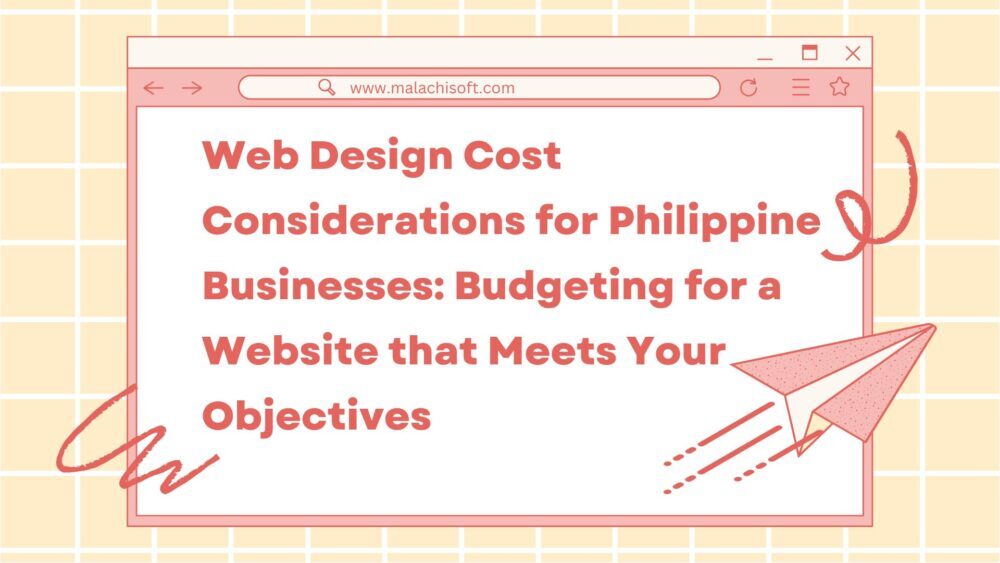In today’s digital age, having a compelling online presence is crucial for businesses to thrive. For Philippine enterprises looking to establish or enhance their online footprint, creating a website tailored to their needs is a pivotal step. However, understanding the cost considerations associated with web design is essential for budgeting effectively. Let’s delve into some key factors that Philippine businesses should consider when budgeting for a website that aligns with their objectives.
1. Define Your Website’s Purpose and Goals
Before diving into web design costs, outline the primary purpose and goals of your website. Whether it’s to showcase products, generate leads, or offer information, a clear understanding of your objectives will guide the design process and budget allocation.
2. Determine the Scope of Work
The complexity and features of a website significantly impact its cost. Decide on the functionalities needed—e-commerce capabilities, blog sections, multimedia integration, etc. A simple informational site will cost less than a full-fledged e-commerce platform with intricate features.
3. Choose the Right Web Design Partner
Selecting a web design agency or professional freelancer is crucial. Consider their portfolio, experience, and the quality of their work. While costs may vary, prioritize expertise and reliability to ensure a website that aligns with your business objectives.
4. Responsive Design for Mobile Accessibility
In the Philippines, mobile internet usage is prevalent. Ensure your website is responsive, adapting seamlessly to various devices (desktops, tablets, smartphones). Responsive design might increase initial costs but is essential for user engagement and search engine rankings.
5. Content Creation and Management
Factor in expenses related to content creation—copywriting, graphic design, and photography. Additionally, consider ongoing costs for content management systems (CMS) and potential maintenance fees for updates and security.
6. Hosting and Domain Costs
Don’t overlook hosting and domain expenses. Research hosting providers that offer reliable services within your budget. A domain name is your website’s identity, so choose wisely and consider renewal costs.
7. SEO and Digital Marketing
Optimizing your website for search engines (SEO) and promoting it through digital marketing are vital for visibility. Allocate a portion of your budget for SEO strategies and online marketing campaigns to drive traffic and enhance your online presence.
8. Maintenance and Future Scalability
Websites require upkeep and potential upgrades over time. Budget for ongoing maintenance costs, including security updates, backups, and potential scalability for future growth or additional features.
Conclusion
Investing in a well-designed website tailored to your business objectives is an essential step for Philippine businesses navigating the digital landscape. By considering these cost factors and allocating resources strategically, you can ensure a website that not only fits your budget but also effectively represents your brand and engages your target audience. Remember, while budget considerations are important, focus on creating a website that delivers value, reflects your brand identity, and helps achieve your business goals in the online sphere.
